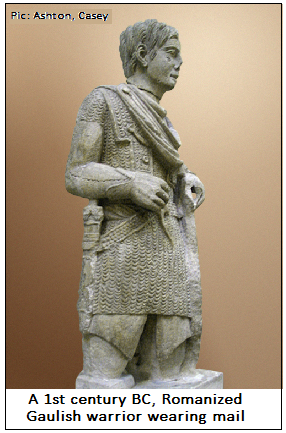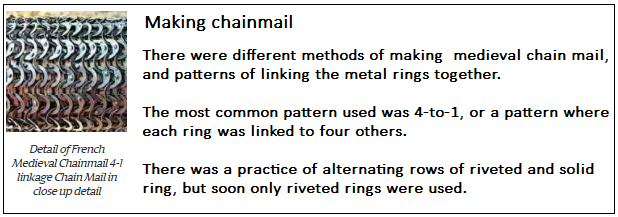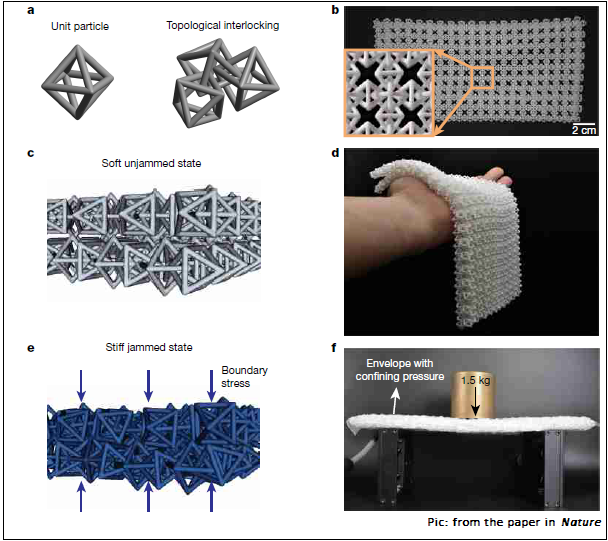It is about chain mail – a garment of steel, says S.Ananthanarayanan.
Personal protection was of pivotal importance in the hand-to-hand fighting that marked warfare of earlier times. Chain mail was a mesh of metal rings linked together, covering of the torso and the limbs for protection against sword slashes and many kinds of arrow heads.
In a paper in the journal, Nature, Yifan Wang, Liuchi Li, Douglas Hofmann, José E. Andrade and Chiara Daraio, from the California Institute of Technology, Jet Propulsion Laboratory at CALTECH, and the Nanyang Technological University, Singapore, describe a return of the structure of chain mail in the creation of a fabric that is light and flexible but can resist impact.
Warfare has been a driver of technology for centuries, and it was skill in the smithy, of fabricating light and flexible armour, that spelt military success. The growth of weapons made of iron and steel was matched by hardier personal covering. And chain mail, which combined protection with flexibility, was common between the 3rd century BC and the 16th century AD in Europe, and longer in Asia and North Africa. Early forms of flexible armour, which consisted of iron rings sewn on to cloth or leather, was used from Roman times and for several centuries. This was improved in medieval times by eliminating the cloth or leather underlay, and interlacing the rings, which were closed by welding or riveting.

A representation of the 8th Century shows a short shirt, or coat, of chain mail covering the upper body, with a separate sleeve for the sword arm. Later models, from records in the 11th Century, depict a longer coat, with full sleeves and divided for use on horseback. After the 14th Century, the breastplate was added, and soon there was plated armour. This was with separate plates connected to enable movement, and with chain mail supporting the region below the joints.

The paper in Nature describes how the structure of chain mail can be used for an architected fabric that displays a range of useful properties. Current trends in ‘smart fabrics,’ the paper says, are wearable fabrics that sense and respond to stimuli from the environment. And these fabrics are usually made by integrating sensing and computing components, like flexible electronics, materials that switch from liquid to solid, and back, when the temperature changes, or materials that respond to light – integrating them into conventional fabrics.
Another kind of fabric would be one that alters its mechanical properties and provides to the wearer support like assistance to joints or perception of touch. Conventional smart fabrics, the paper says, are woven or knitted with continuous material, like fibres or wires. The fabric now proposed, however, is made up of discrete, that is separate, particles. A collection, or a sheet, of connected particles, like the rings of chainmail, is known to change the mutual orientation of the particles from one of being flexible, to one of being rigid, when subjected to pressure, a change known as ‘jamming’, the paper says. It is similar to water changing from liquid to solid, as ice, when the temperature changes – only, now it is a change of mechanical properties, which depend not on the temperature, but on how the particles in the assembly are connected.
The paper cites another study, which has examined how the fluid flow of assemblies of particles, like a pile of sand, parcels on a conveyor belt, or beans being poured out of a bottle, could get ‘jammed’ – and the ‘jam’ could be released, sometimes by a gentle disturbance, like a tap. The cited study, which is inthe journal, Physical Review Letters, considers the particles in the jam, like particles of sand stuck in pipe, as one of rigid particles, which cannot be deformed. The pile can then support a very large force in the jamming direction. But a light force, like a hammer tap in the pipe, would destroy the jamming formation of the sand particles and the flow would resume. For an extended material, like one consisting of sand particles, the material is fragile in the sense that a slight change in direction of the applied stress will change the entire structure of the force chains that give the pile its rigidity.
Based on these principles, some smart materials, which adapt their rigidity, have been developed. These materials, however, are dense and need to be in large volumes for appreciable effects, the paper says. And furthermore, they can be used only with crushing, or compressive forces, not when the forces are tensile, that is to say, forces which tend to stretch the material. The paper then cites instances of the structure of interlocked units found ancient chain mail being used to create chains which are long enough to form loops and which exhibit stiffening when stretched. And then, inspired by ancient chainmail armour, the authors of the paper developed a fabric consisting of two layers of interlocked particles – where each particle is a hollow 3-D structure, built of connected members, as shown at (a) in the picture. The design aims at the lowest weight and the greatest number of points of contact between particles placed together. The shape of the particles is hence the octahedron, or eight-sided cube, which allows forming sheets with increased contact between layers when they are stacked.

The resulting stack, the paper says, can freely bend, fold and drape over curved objects (c and d in the picture). And then, to trigger jamming, the sheet in (d) is confined in an envelope and the air is pumped out. The lateral force of atmospheric pressure on the envelope jams the structure - and it gets the rigidity to carry a load, as shows in (e) and (f) in the picture.
The team has then carried out trials and measured the strength that the material develops when jamming is triggered, to understand its mechanics. As the jamming transition – from free to jammed and vice versa - is seen not to depend on the size of the components, the fabric dimensions could vary, in principle, from microns to metres, and to use different materials, the paper says.
The pressure applied to start the jamming need not be the envelope that was used, but could be electrical or magnetic, for instance. This would widen the areas in which the material could be used. For instance, there could be a wearable body support that stiffens when the user, bends, loses balance or loses strength, according to how the material is designed. Or for different kinds of medical support.
------------------------------------------------------------------------------------------ Do respond to : response@simplescience.in-------------------------------------------